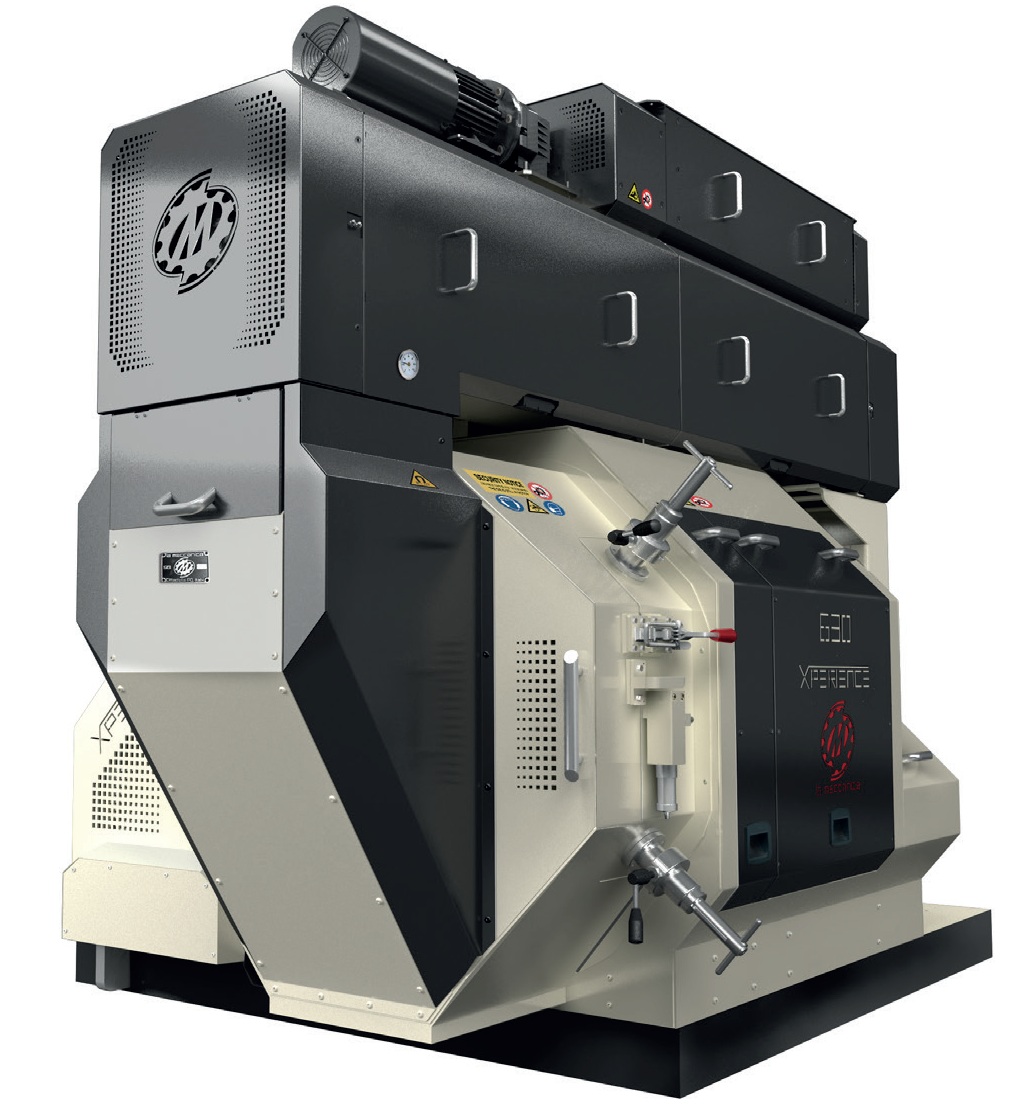Feed mill plants in the Philippines are pivotal to the country’s robust agricultural sector, particularly in supporting the production of essential animal feed. These plants process raw materials like grains and oilseeds into high-quality feed that meets the nutritional needs of livestock, poultry, and aquaculture. Given the rising demand for meat and dairy products, the role of efficient feed mill plants has become increasingly critical.
These facilities leverage advanced technologies to ensure their products’ consistency and nutritional value, thereby enhancing the productivity and profitability of the agricultural industry. Beyond economic benefits, feed mill plants also contribute significantly to food security and sustainability by converting agricultural byproducts into nutritious feed ingredients. This sustainable approach minimizes waste and optimizes resource utilization, supporting a more efficient food production system aligned with global demands for animal-based proteins.
Feed mill plants and equipment in the Philippines are indispensable components of the agricultural landscape. They play a vital role in meeting the country’s food production needs while promoting environmental stewardship and economic growth.
Types of feed mill plants and their functionalities
Feed mill plants in the Philippines come in various sizes and configurations, each designed to cater to the specific needs of the local agricultural industry. These facilities can be broadly classified into three main types: small-scale, medium-scale, and large-scale feed mill plants.
-
Small-scale feed mill plants
Small-scale feed mill plants are typically found in rural areas or on individual farms, serving the needs of smaller livestock and poultry producers. These facilities often utilize simpler equipment and processes, focusing on producing basic feed formulations. Small-scale feed mill plants are vital in supporting small-scale farmers’ livelihoods and ensuring feed availability in remote regions of the Philippines.
-
Medium-scale feed mill plants
Medium-scale feed mill plants are more common in urban and semi-urban areas, catering to the needs of larger livestock and poultry operations. These facilities employ more advanced equipment and technologies, allowing for the production of a wider range of feed products, including specialized formulations for different animal species and growth stages. Medium-scale feed mill plants often serve as regional hubs, supplying feed to a network of smaller farms and distributors.
-
Large-scale feed mill plants
On the other hand, large-scale feed mill plants are typically located in major industrial or agricultural centers, serving the needs of large-scale livestock and poultry producers. These facilities are equipped with state-of-the-art machinery and automation systems, enabling them to achieve high levels of efficiency and output. Large-scale feed mill plants often have the capacity to produce a diverse range of feed products, including complete feeds, concentrates, and premixes, catering to the diverse needs of the animal production industry in the Philippines.
Key components of feed mill equipment
The success of a feed mill plant in the Philippines largely depends on its equipment’s quality and performance. Feed mill equipment encompasses a wide range of specialized machinery and systems, each designed to perform a specific function in the feed production process. Understanding the key components of feed mill equipment is crucial for ensuring efficient and reliable operations.
-
Raw material handling system
One of the most critical components of a feed mill plant is the raw material handling system. This system is responsible for the receiving, storing, and pre-processing of the various raw materials used in feed production, such as grains, oilseeds, and protein sources. The raw material handling system typically includes equipment like conveyors, bucket elevators, silos, and weighing systems, all of which work together to ensure a steady and consistent supply of raw materials for the production process.
-
Grinding and milling system
Another essential component of feed mill equipment is the grinding and milling system. This system reduces the size of the raw materials, ensuring that they are adequately prepared for the subsequent mixing and pelleting processes. Feed mill plants often utilize various grinding and milling equipment, including hammer, roller, and disc mills, each with unique capabilities and applications.
-
Mixing system
The mixing system is another crucial component of feed mill equipment, as it is responsible for precisely blending the various feed ingredients. This system typically includes high-capacity mixers, such as ribbon blenders or paddle mixers, which ensure a homogeneous and well-balanced final product. Accurate weighing and dosing systems are also integral to the mixing system, ensuring that the desired feed formulation is consistently achieved.
Factors to consider when choosing feed mill plants and equipment
When selecting feed mill plants and equipment for operations in the Philippines, several key factors must be considered to ensure optimal performance and profitability. These factors include capacity, efficiency, reliability, and cost-effectiveness.
-
Capacity
Capacity is a crucial factor, as it determines the overall production capabilities of the feed mill plant. Farmers and livestock producers in the Philippines must carefully assess their current and future feed requirements to ensure that the chosen feed mill plant can meet their needs. This includes considering factors such as the size of the livestock or poultry operation, the growth rate of the animals, and the desired production volume.
-
Efficiency
Efficiency is another important factor, as it directly impacts the overall cost of feed production. Feed mill plants that utilize energy-efficient equipment and employ advanced automation and control systems can significantly reduce energy consumption and labor costs, ultimately improving the profitability of the operation. Additionally, efficient feed mill plants are better equipped to minimize waste and maximize the utilization of raw materials, further enhancing their sustainability.
-
Reliability
Reliability is a critical factor when selecting feed mill plants and equipment in the Philippines, as any disruptions in production can significantly impact the overall supply of animal feed. Feed mill plants must be equipped with durable and well-maintained equipment that can withstand the demands of continuous operation and quickly address any issues that may arise. Choosing feed mill plants and equipment from reputable manufacturers with a proven track record of reliability is essential for ensuring consistent and uninterrupted feed production.
Common challenges in operating feed mill plants
Operating feed mill plants in the Philippines can present a unique set of challenges that must be effectively addressed to ensure the smooth and efficient production of animal feed. These challenges can range from logistical and technical issues to regulatory and environmental concerns.
Challenge #1: Availability and quality of raw materials
One of the primary challenges feed mill plants face in the Philippines is the availability and quality of raw materials. Fluctuations in the supply and pricing of grains, oilseeds, and other feed ingredients can significantly impact the production process, requiring feed mill operators to adapt their procurement strategies and formulations constantly. Additionally, the quality of raw materials can vary, necessitating rigorous testing and quality control measures to ensure the final feed product meets the required standards.
Challenge #2: Environmental impact
Another challenge is managing energy consumption and overall environmental impact. Feed mill plants are energy-intensive operations, requiring significant amounts of electricity, fuel, and water to power their equipment and processes. Navigating the complex regulatory landscape and adhering to environmental regulations can be a constant challenge for feed mill operators in the Philippines, who must find ways to reduce their carbon footprint and minimize their environmental impact.
Challenge #3: Continuous maintenance and efficiency
Maintaining the reliability and efficiency of feed mill equipment is another significant challenge. Feed mill plants in the Philippines often operate in harsh environmental conditions, with high temperatures, humidity, and exposure to dust and other contaminants. Ensuring the equipment is properly maintained, serviced, and upgraded as necessary prevents breakdowns and maximizes productivity.
Best practices for maintaining and optimizing feed mill equipment
Maintaining and optimizing feed mill equipment is essential for ensuring the consistent and efficient production of animal feed in the Philippines. By adopting best practices in equipment maintenance and optimization, feed mill operators can extend the lifespan of their equipment, reduce downtime, and improve overall productivity.
1. Implement a comprehensive preventive maintenance program.
This program involves regularly scheduled inspections, lubrication, and replacing critical components such as bearings, belts, and filters. By proactively addressing potential issues before they become major problems, feed mill operators can minimize the risk of unexpected breakdowns and ensure the smooth operation of their equipment.
2. Prioritize proper cleaning and sanitation of feed mill equipment.
Feed mill plants must maintain strict hygiene standards to prevent the buildup of dust, debris, and microbial contamination, which can compromise the quality and safety of the final feed product. Regular cleaning of equipment, including silos, mixers, and conveyor systems, helps to maintain optimal performance and reduce the risk of product contamination.
3. Invest in operator training and equipment monitoring to optimize performance.
Feed mill operators must be well-versed in adequately operating and maintaining the equipment, ensuring it is used according to the manufacturer’s recommendations. Additionally, the use of advanced monitoring and control systems can help feed mill operators identify and address potential issues before they escalate, improving overall equipment efficiency and productivity.
Innovations and advancements in feed mill technology
The feed mill industry in the Philippines continuously evolves, with various innovative technologies and advancements transforming how animal feed is produced. These innovations aim to improve efficiency, enhance product quality, and reduce the environmental impact of feed mill operations.
One of the most significant advancements in feed mill technology is the integration of automation and digital control systems. Feed mill plants are increasingly adopting advanced automation and control technologies, such as programmable logic controllers (PLCs), supervisory control and data acquisition (SCADA) systems, and Internet of Things (IoT) devices. These technologies enable feed mill operators to precisely monitor and control every stage of the production process, from raw material handling to final product packaging, ensuring consistent quality and improved process efficiency.
Another area of innovation in feed mill technology is the development of energy-efficient equipment and processes. Feed mill plants increasingly incorporate energy-saving technologies, such as high-efficiency motors, variable-frequency drives, and waste heat recovery systems, to reduce their energy consumption and carbon footprint. These advancements contribute to the sustainability of the feed mill industry, help lower operating costs, and improve the profitability of feed mill operations.
Advancements in feed formulation and ingredient processing are also transforming the feed mill industry in the Philippines. Feed mill plants leverage cutting-edge technologies, such as near-infrared (NIR) spectroscopy and advanced mixing systems, to optimize their feed products’ nutritional content and palatability. These innovations enable feed mill operators to tailor their formulations to the specific needs of different livestock and poultry species, improving animal health, growth, and productivity.
The future of feed mill plants and equipment in the Philippines
The feed mill industry in the Philippines is set for significant growth, driven by rising demand for animal-based proteins, the imperative of sustainable food production, and ongoing technological advancements. As the agricultural sector expands, feed mill plants and equipment will be increasingly vital in supporting livestock and poultry industries over the long term.
Future developments in feed mill technology will prioritize energy efficiency, environmental sustainability, and the quality and safety of animal feed. Innovations such as automation, digitalization, and AI and machine learning integration are expected to revolutionize feed mill operations across the Philippines, ensuring more efficient production processes.
Collaboration between global manufacturers, local suppliers, and feed mill operators will likely intensify, fostering knowledge exchange and tailored solutions for Philippine agriculture. This collaborative effort will enhance operational standards and address the specific challenges of the local industry, thereby supporting the country’s food security goals and the well-being of its livestock and poultry sectors.
As the Philippines continues prioritizing food security and sustainability, the evolution of feed mill plants and equipment remains pivotal. Feed mill operators can position themselves for sustained success by adopting cutting-edge technologies and fostering partnerships, contributing to national agricultural prosperity and global food production standards.

